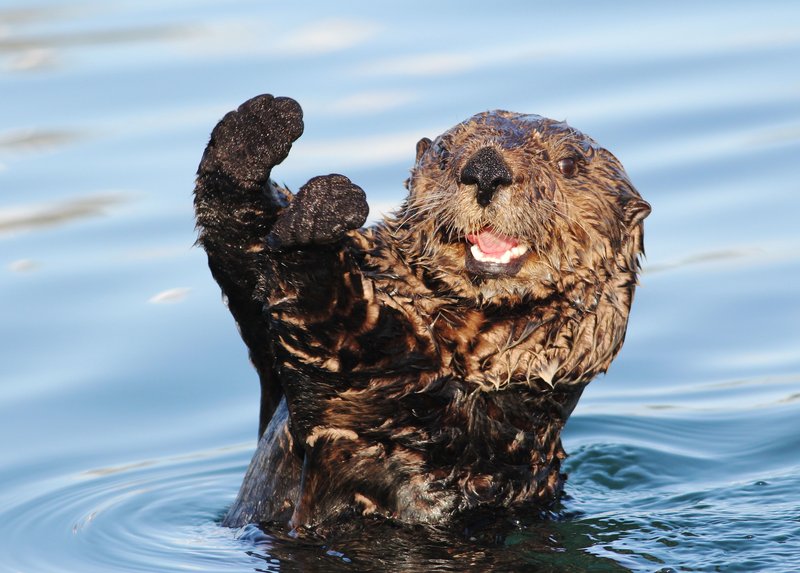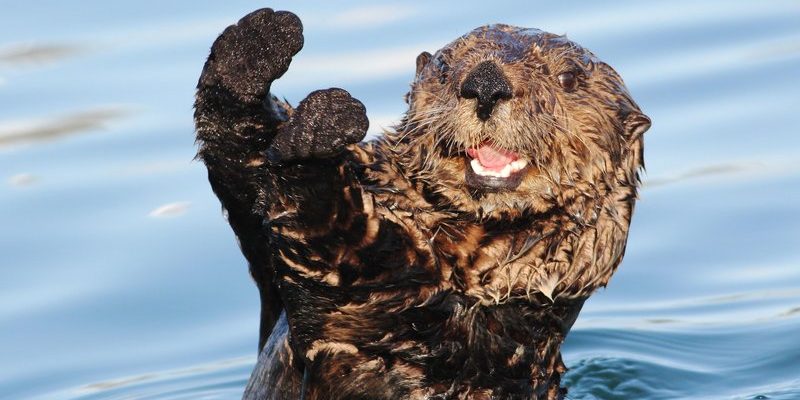
If you’ve ever seen a sea otter in action, you know they’re not just adorable; they’re fascinating little beings with some surprising characteristics. Let’s dive into the top 10 facts about sea otters that will not only wow you but also help you appreciate these remarkable animals even more.
1. They Have the Thickest Fur in the Animal Kingdom
Here’s the thing: sea otters have fur that’s not just soft; it’s incredibly thick. In fact, they have the thickest fur of any animal, with about 600,000 to 1,000,000 hair strands per square inch! This isn’t just for show; their fur serves as a vital insulator against cold water temperatures.
Unlike other marine mammals that rely on blubber for insulation, sea otters need to keep their fur clean and waterproof. They spend a significant amount of time grooming to ensure their fur remains in top condition. It’s almost like having a fancy hairstyle that requires daily maintenance—only their lives depend on it!
2. They Use Tools Like Pros
Sea otters are some of the few non-primates known to use tools. They have a favorite method: using rocks to crack open shellfish. Can you picture it? They float on their backs, holding a rock on their chest, and then smash it against clam or sea urchin shells. It’s like a little otter restaurant experience, complete with their very own kitchen utensils!
What’s even more fascinating is that they pass this tool-using skill down to their young ones. Young otters learn by watching their mothers, which showcases an impressive form of learning and culture among these creatures.
3. Sea Otters Are Excellent Divers
You might be wondering just how deep these little furballs can go. Sea otters can dive to depths of 300 feet and hold their breath for up to five minutes while searching for food. That’s pretty impressive for such small creatures! They primarily feed on sea urchins, crabs, and clams, spending most of their time underwater hunting.
Imagine being able to hold your breath for that long! They have a special adaptation that allows their bodies to conserve oxygen, making them some of the best divers in the marine world.
4. They Play a Vital Role in Their Ecosystem
Sea otters are more than just cute; they are crucial for maintaining healthy kelp forests. By preying on sea urchins, they keep the urchin population in check, preventing overgrazing of kelp. Think of them as the “forest rangers” of the ocean—keeping everything balanced and thriving.
Without sea otters, sea urchin populations can explode, leading to the destruction of kelp forests. This loss affects numerous other marine species, showing how interconnected life is in the ocean.
5. They’re Social Creatures
While sea otters may enjoy solo diving for food, they are inherently social animals. They often gather in groups called rafts, which can include up to 100 otters! When in these rafts, they hold hands or grab onto kelp to stay together, preventing them from drifting apart in the currents.
Imagine a whole bunch of otters having a cuddle party while they float—adorable, right? This social structure helps them stay safe from predators like sharks and orcas.
6. Sea Otters Are Not Fish
Despite their aquatic lifestyle, sea otters are not fish. They belong to the family Mustelidae, which includes weasels, badgers, and martens. This means they’re more closely related to land animals than to fish. Their adaptations for living in water, like their dense fur and webbed feet, allow them to thrive in their ocean environment.
It’s pretty wild to think about how evolution has shaped these creatures to be so perfectly suited for life in the water while still being land mammal relatives!
7. They Have a Unique Reproductive Cycle
When it comes to reproduction, sea otters have a fascinating behavior. The female sea otter gives birth in the water and often wraps the pup in kelp to keep it from drifting away. This nurturing behavior is essential for the pup’s survival.
The mother will care for her pup for six months, teaching it how to hunt and groom itself. This bond is incredibly strong, and it’s heartwarming to see how dedicated mothers are to their babies.
8. Sea Otters Are an Endangered Species
Sadly, sea otters are considered an endangered species due to threats such as pollution, habitat loss, and hunting. In the 18th and 19th centuries, they were hunted to near extinction for their luxurious fur. While conservation efforts have helped them rebound, they still face challenges today.
By supporting conservation initiatives and spreading awareness, we can help ensure that these amazing animals continue to thrive in our oceans for generations to come.
9. They Can Sleep in the Water
If you’ve ever seen a sea otter floating on its back, there’s a good chance it’s taking a nap! Sea otters can sleep in the water without drifting away by wrapping themselves in kelp or holding hands with fellow otters. This is a clever survival tactic, allowing them to rest while staying safe from predators.
Can you imagine a world where you could nap and not worry about floating away? Sea otters have mastered that skill!
10. Their Vocalizations Are Diverse
Lastly, sea otters are quite chatty! They communicate using a range of vocalizations, such as chirps, whistles, and growls. Each sound can convey different messages, from alerting others to danger to expressing affection. Their vocal communication is part of what makes their social structures so strong.
Listening to a raft of sea otters “talking” to each other is like eavesdropping on a heartwarming conversation—full of emotion and connection.
In conclusion, sea otters are truly remarkable creatures that deserve our admiration and protection. They are not just cute animals; they are vital players in our oceans’ health and ecosystems. By learning more about them, we can appreciate their role even further and work toward a brighter future for these incredible marine mammals. So, the next time you see a sea otter, take a moment to admire all the fascinating facts that make them so unique!

